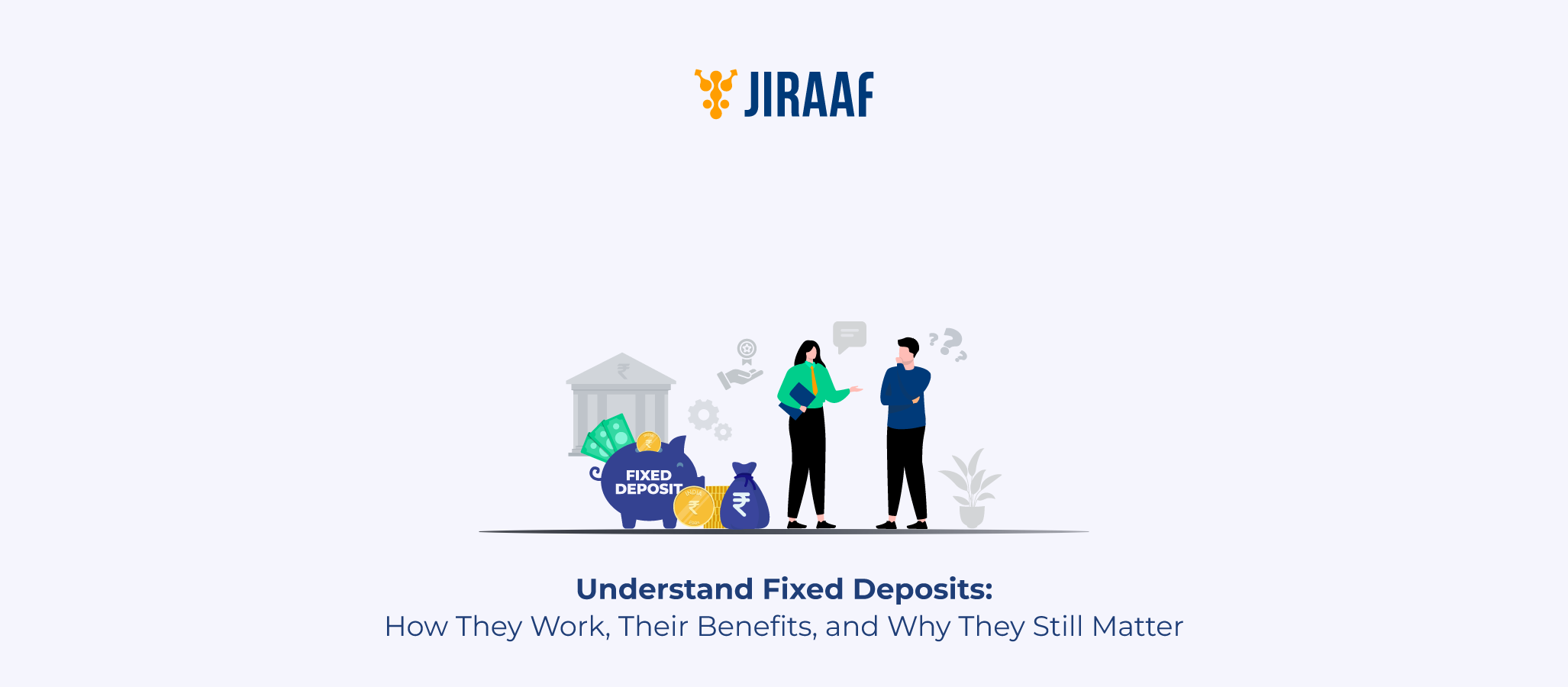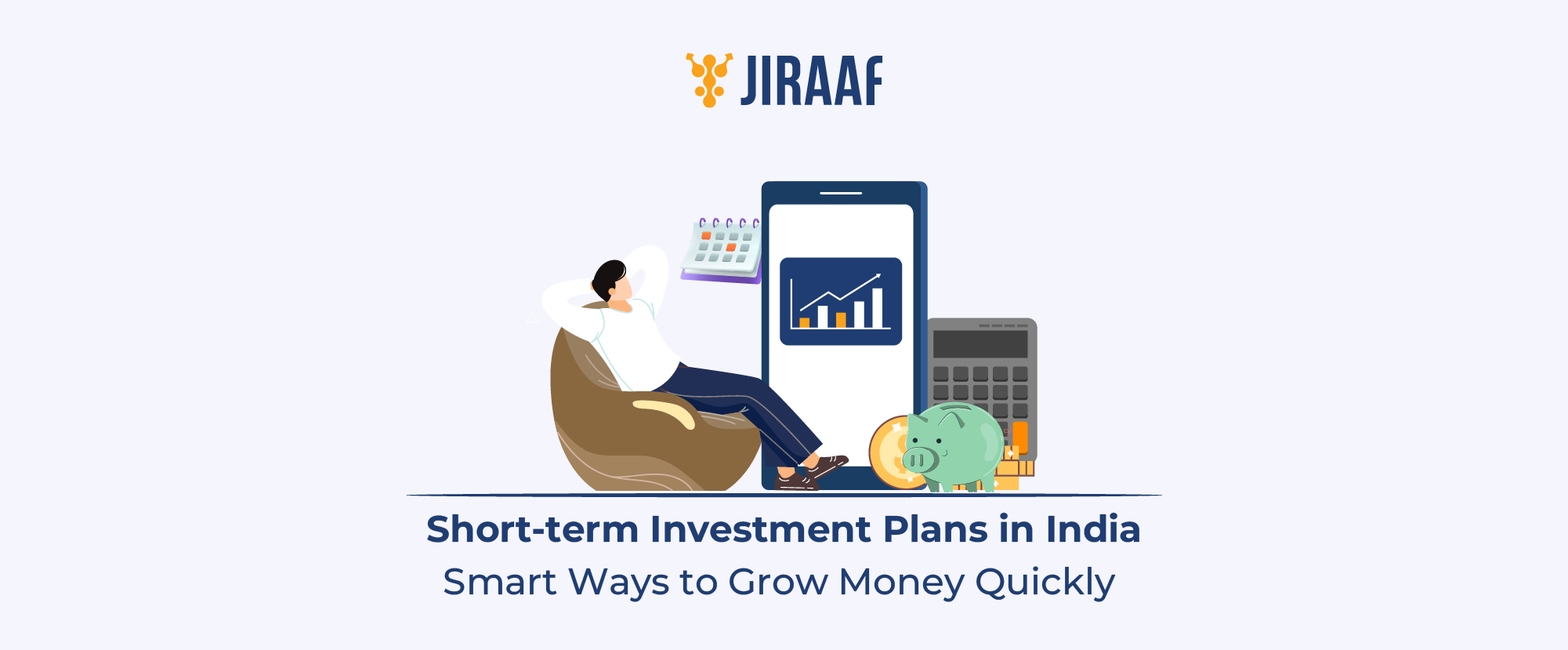A Fixed Deposit (FD) is one of the most trusted and straightforward investment options offered by banks, Non-Banking Financial Companies (NBFCs), and post offices in India. It is especially popular among conservative investors and first-time savers due to its guaranteed returns, capital safety, and flexible tenure options.
This guide will help you understand what a fixed deposit is, how it works, the various types of FDs available, their tax implications, and whether FDs align with your financial goals.
What is a Fixed Deposit (FD)?
A Fixed Deposit (FD) is a financial product that allows individuals to deposit a lump sum amount with a financial institution for a predefined tenure at a fixed interest rate. Unlike savings accounts, FDs offer higher interest and are locked in for a fixed duration unless withdrawn prematurely.
Fixed Deposit Meaning:
- Offered by banks, NBFCs, and post offices
- Interest rates are fixed and guaranteed
- Capital protection with assured returns
Example: If you invest ₹100,000 in a 1-year FD at 7% interest, you earn ₹7,000, resulting in a maturity amount of ₹107,000.
How Does a Fixed Deposit Work?
When you choose to invest in an FD, you specify:
- Deposit amount: the lump sum you wish to invest
- Tenure: typically ranges from 7 days to 10 years
- Payout option: interest can be paid monthly, quarterly, annually, or at maturity
The financial institution then calculates interest based on the selected payout option:
Interest Calculation:
- Simple Interest: Common for short-term FDs (less than 6 months)
- Compound Interest: Applied to long-term FDs (6 months and above)
You can also reinvest the interest to enhance returns in cumulative FDs.
Types of Fixed Deposits in India
| Type | Description |
| Standard FD | Traditional FD with fixed interest and tenure |
| Tax-Saving FD | 5-year lock-in period; eligible for deduction under Section 80C (up to ₹1.5 lakh) |
| Cumulative FD | Interest compounded and paid at maturity for higher returns |
| Non-Cumulative FD | Interest paid out periodically (ideal for pensioners) |
| Senior Citizen FD | Offers additional interest rate (usually 0.25% to 0.50% higher) for individuals above 60 years |
| Flexi FD | Linked to your savings account, allows auto-sweep and reverse sweep for liquidity |
Tax on Fixed Deposit Interest
Though FDs offer guaranteed returns, the interest income is taxable under the Income Tax Act.
Key Tax Points:
- TDS at 10% is applicable if total FD interest in a financial year exceeds ₹50,000 for senior citizens and ₹40,000 for others
- Submit Form 15G/15H if your income is below taxable limits
- Report FD interest under Income from Other Sources while filing ITR
You can consider splitting your investment across multiple banks to manage TDS or explore Tax-Free Bonds for better post-tax returns.
Minimum Amount Required for Fixed Deposit
FDs are accessible to a wide range of investors:
- Public Sector Banks: Minimum investment starts at ₹500 or ₹1,000
- Post Office Time Deposit (POTD): ₹1,000 minimum
- Private Banks & NBFCs: Often higher, starting from ₹5000 to ₹10,000
Online platforms and neo-banks also offer digital FDs with low entry amounts and faster onboarding.
Fixed Deposit vs Recurring Deposit: Which is Better?
| Feature | Fixed Deposit | Recurring Deposit |
| Investment | Lump sum | Monthly Installments |
| Tenure | Fixed | Fixed |
| Interest Rate | Slightly higher | Slightly lower |
| Flexibility | Suitable for one-time investment | Ideal for salaried individuals |
| Liquidity | Partial premature withdrawal | Less liquid unless entire RD is closed |
Verdict: Opt for FDs if you have a surplus lump sum. Choose RDs for building savings gradually and systematically.
Is Fixed Deposit a Good Investment?
FDs are ideal for investors looking for capital protection and predictable income.
Advantages:
- Fixed, guaranteed returns
- Easy to manage via bank apps or online banking
- Multiple tenure and payout options
- Higher rates for senior citizens
- Safe and regulated by RBI/GOI
Disadvantages:
- Returns may not beat inflation
- Fully taxable interest reduces net returns
- Lock-in periods with penalties for early withdrawal
FDs work best for:
- Emergency fund parking
- Short- and medium-term financial goals
- Conservative portfolios balancing equity risk
Conclusion
A Fixed Deposit is a cornerstone of safe investing in India. While it may not offer explosive returns like equities, its predictability, security, and ease of access make it a crucial part of any balanced financial plan. By understanding how FDs work, their types, and tax implications, you can make more informed decisions to optimize returns while safeguarding your capital.
Frequently Asked Questions (FAQs)
What is the full form of FD in banking?
Fixed Deposit
How is interest calculated on fixed deposits?
Interest is calculated using either simple or compound interest, depending on the duration and type of FD.
Is the interest from fixed deposits taxable?
Yes. It is added to your total income and taxed as per your applicable income slab.
Can I break my fixed deposit before maturity?
Yes, but it may incur a penalty and reduced interest earnings.
What is the minimum tenure for an FD?
Most banks offer FDs starting from 7 days.
Is FD better than a savings account?
Yes. FDs offer significantly higher interest rates compared to savings accounts.
Who should invest in fixed deposits?
Suitable for senior citizens, low-risk investors, and individuals with short-term goals or idle cash.
Discover fixed income investments with Jiraaf, a SEBI registered online bonds platform that educates and brings access to a wide array of bonds. Sign up today to explore diversified fixed income investment opportunities to support your goal-based wealth creation journey. Start investing!









